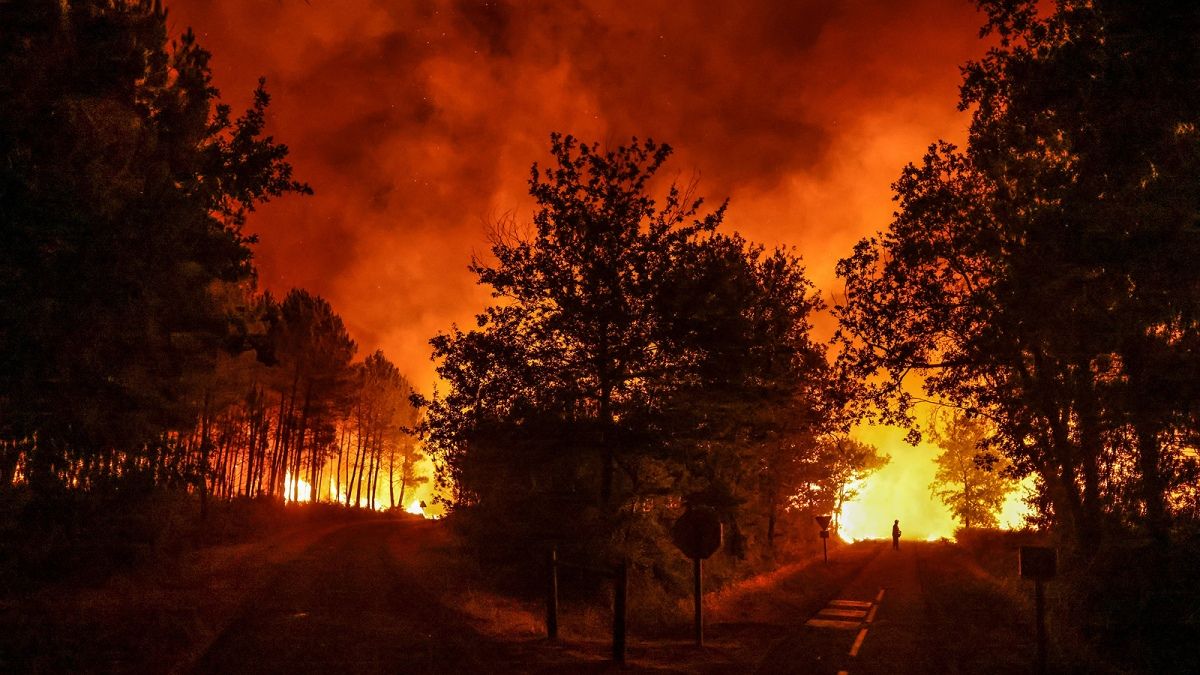The lack of water and the prohibition of the OSE
The directory of SBI resolved this Friday at noon to “prohibit” the non-essential use of water in Montevideo and cannelloni –including the Gold Coast–, and in lavalleja, Cologne, Florida, Saint Joseph and Sorianofrom tomorrow.
“OSE has urged the population to responsibly consume drinking water, with the aim of minimizing non-priority uses,” said the official statement from the board, which detected consumption very close to the limit last week in the country’s capital. The measure came into effect starting this Saturday February 11 by indefinite time. Between the “non-priority” uses mentioned by the state firm are: the irrigationhe sidewalk washing and outdoor patios, the car wash by individuals and the swimming pool filling.
In the department of Florida, one of the most affected at the agricultural level, there are water reserves for 1 monthand the situation, as the OSE engineer informed the press, Peter Izaguirreis “turning red” in case there is no precipitation. In its homonymous departmental capital, some 8,000 cubic meters per day —with peaks of 9,000 cubic meters—, with a percentage of the river less than 10%where the rest of that consumption is sent directly from the OSE reserve.
In Canelones, for its part, there is also a lack of water where, if the restrictions are not respected, they would only have water for 10 days. In addition, it is one of the departments affected by the outbreaks of fires. “The lack of water hits hard. Also for fire fighting. It’s priority in this emergency too. Today from the Intendancy we support with machinery and trucks in the 4 large sources (Toledo, El Pinar, La Palmita and Las Piedras). Firefighters working to the limit” tweeted the canary mayor, Yamandu Orsi.
https://twitter.com/OrsiYamandu/status/1624887403423969282
The lack of water hits hard. Also for fire fighting. It’s priority in this emergency too. Today from the Intendancy we support with machinery and trucks in the 4 large sources (Toledo, El Pinar, La Palmita and Las Piedras). Firefighters working to the limit.
— Yamandu Orsi (@OrsiYamandu) February 12, 2023
the fires grow
The National Directorate of Firefighters of Uruguay warned this Sunday that the Wildfire Risk Index of the Uruguayan Institute of Meteorology (inumet), marks a danger “very high” start of fire Throughout the national territory. After noon on Sunday, Firefighters found themselves fighting up to 30 outbreaks simultaneously in different parts of the country.
The highlights of the Montevideo metropolitan area occurred from the early hours of the morning in Lecocq Park, where five Fire Departments worked and was controlled around 07:00 hours. At the same time, around 10:30 a.m. there was a fire with a frontage of 400 meters in Path of the Footprintaffecting about 25 hectares of field.
The Inumet showed he 100% Uruguay map painted red —very high risk— on a scale that also includes low risk —green—, medium risk —yellow—, and high risk —orange—, in an index that is based on the nesterov indexdeveloped in the old Soviet Unionand whose variables are temperature and air saturation deficit.
How much will agriculture lose because of the drought?
The minister of Livestock, Agriculture and Fisheries (MGAP), Fernando Mattospresented at the beginning of February before the Permanent Commission of the Parliament a report with preliminary estimates of the impact of drought on everything Uruguay, which would cost about 1,175 million dollars. The disaggregated figure presented by the MGAP shows the impact on the different items of Uruguayan agriculture.
In this way, in the dairy a loss of 100 million dollars is estimated between the additional costs of supplementation and the drop in remission; 440 million in the cattle raising of meat due to unborn calves and loss of live weight for slaughter); and 145 million dollars in lost grasslands, considering the total country between beef and dairy cattle. Likewise, the agriculture it lost 490 million dollars due to the 1.08 million tons not harvested and the drop in yields.
Among other direct impacts that were estimated were rice, which is expected to have a compromised area of 3,000 hectares in terms of yield potential; and afforestation, which has at least 800 hectares affected by fireswith losses of between 10% and 15% of spring plantings, and between 25% and 30% of cubic meter production in 2023. The horticulture, for his part, has smaller sizes and affectation in quality, lower yields and volume of production, and loss of crops. In viticulture there is a 20% reduction in production volume in 2023.
Source: Ambito




